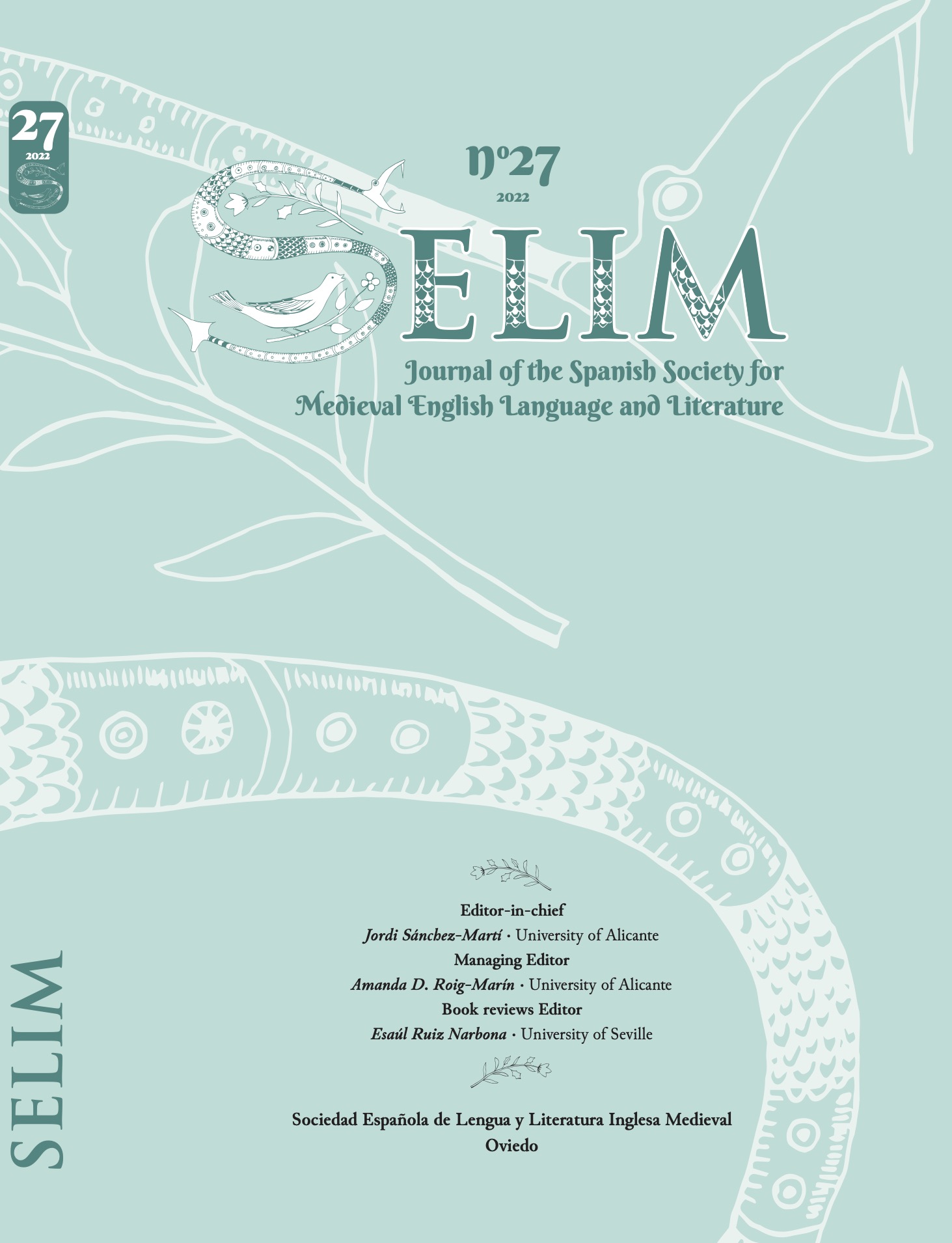Abstract
When Old English appeared in a written form for the first time, it had already lost inflections like optative, hortative, perfective, passive, etc. Making up for these morphological forms, it started, again before it was written and preserved, using periphrastic expressions with modal auxiliaries, habban, beon/wesan, utan, ongan, etc. Without having middle voice, it used ‘impersonal’ and ‘reflexive’ constructions (the single quotes mean that they included quasi-impersonals and quasi-reflexives in the real sense of the words). In this paper I focus on some such verbs as lician, lystan, sceamian,þyncan and wer(g)ian with their native and/or loan synonyms like (dis)plesen, joien, remembren, repenten, semen, etc. and their constructions used in Old and Middle English so as to maintain that their peculiar features reflect compensatory devices of the lost function before the appearance of Old English.
References
Bosworth, J. & T. N. Toller 1898 [rpt. 1929, 1954, 1972]: An Anglo-Saxon Dictionary. London, Oxford University Press.
[DOE =] Cameron, A., A. Crandell Amos, A. diPaolo Healey et al. eds. 2018: Dictionary of Old English: A to I online. Toronto: Dictionary of Old English Project, Centre for Medieval Studies, University of Toronto.
[DOEC =] diPaolo Healey, A. et al. eds. 2009–: Dictionary of Old English Web Corpus. Toronto, University of Toronto Press. http://www.doe.utoronto.ca.
Godden, M. & S. Irvine. eds. 2009: The Old English Boethius. 2 vols. Oxford, Oxford University Press.
The Holy Bible, 1611 Edition, King James Version. 1993: Nashville, Thomas Nelson Publishers.
[MED =] Kurath, H, S. M. Kuhn, J. Reidy & R. E. Lewis eds. 1952-2001: Middle English Dictionary. Ann Arbor, University of Michigan Press.
http://quod.lib.umich.edu/m/med
[OED3 =] Proffitt, M. ed: 2000–: The Oxford English Dictionary Online. Oxford, Oxford University Press. http://www.oed.com
Ogura, M. 1986: Old English ‘Impersonal Periphrasis’, or the Construction ‘Copula + Past Participle’ of ‘Impersonal’ Verbs. Poetica, 23: 16-52.
Ogura, M. 1991: Displese yow and Displeses yow: OE and ME Verbs Used Both ‘Impersonally’ and Reflexively. Poetica, 34: 75–87.
Ogura, M. 2003: ‘Reflexive’ and ‘Impersonal’ Constructions in Medieval English. Anglia, 121.4: 535–556.
Ogura, M. 2019: Indirect Object or ex-Dative with or without to in the Earlier and Later Versions of the Wycliffite Bible. In M. Stenroos, et al eds. Current Explorations in Middle English. Frankfurt am Main, Peter Lang: 193–206.
Skeat, W. W. ed. 1887, 1871, 1874, 1878 [rpt. 1970]: The Gospel According to Saint Matthew, Saint Mark, Saint Luke and Saint John. Darmstadt, Wissenschaftliche Buch-gesellschaft.
Sweet, H. ed. 1871–72: King Alfred’s West-Saxon Version of Gregory’s Pastoral Care. EETS, o.s. 45 and 50. London, Oxford University Press.

This work is licensed under a Creative Commons Attribution-NonCommercial-NoDerivatives 4.0 International License.
Copyright (c) 2022 SELIM. Journal of the Spanish Society for Medieval English Language and Literature.




